Wacom Bamboo Ink is an excellent alternative to the Surface Pen
Wacom's first "Universal Pen" stylus for Windows 10 PCs is here, and it's called the Bamboo Ink. Here is my review.
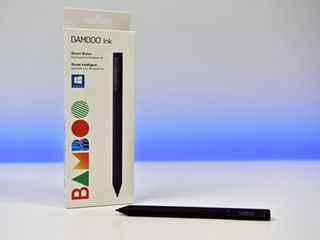
Wacom is jumping onto the Surface train with its new $69.99 Bamboo Ink pen. The Bamboo Ink is exciting because it's one of the first "smartpens" on the market that supports Wacom's Universal Pen Framework (UPF). That framework means it can seamlessly shift between Microsoft Surface devices and Wacom Active ES (electrostatic) ones, giving artists and pros more choices.
I spent the last few days with the Bamboo Ink, and here is what I think.
This is Bamboo Ink
The Bamboo Ink (CS321AK) is a digital-inking pen for modern PCs, including the Surface Pro 3, Surface Pro 4, and new Surface Pro, as well as Surface Book and Surface Studio. Besides bringing Wacom's well-known brand to the Surface line, artists and ink users can also use it on Wacom AES-enabled devices such as HP's Elite x360 or the Dell Precision 5285.
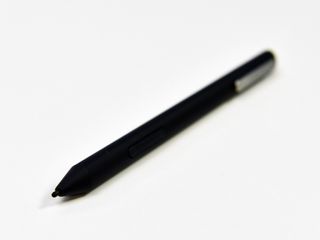
It does not work with the original Surface Pro or Surface Pro 2, which were based on Wacom EMR technology.
Microsoft's pen tech is based on N-trig. Before Microsoft bought N-trig, that company competed with Wacom in the PC pen space. Now, Microsoft's tech is branded as Microsoft Pen Protocol (MPP), formerly known as DuoSense2 under N-trig.
Wacom's new standard is referred to as Active ES, and it is why people always ask which pens work with what devices. With MPP and AES pens on the market, it can get confusing for consumers.
Get the Windows Central Newsletter
All the latest news, reviews, and guides for Windows and Xbox diehards.


With the UPF – first announced in March 2016 – the guesswork is removed because users can now switch between the two standards in the same pen. Bamboo Ink is the first to bring that feature to market.
How is Bamboo Ink better?
Bamboo Ink supports up to 4,096 pressure levels, which is a significant improvement from the Surface Pro 4's 1,024 levels. It also comes with interchangeable nibs in the box at three various levels (soft, medium, and firm).
Wacom is cagey on the exact specifications of Bamboo Ink, so the activation force is currently unknown (more on that below).
Wacom is also known for having a more triangular shape to its pens versus round barrel design as found in the Surface Pen. However, many artists may enjoy the more ergonomic Wacom design than the Surface's "metal tube" for long drawing sessions.


Like the Surface Pen, the Bamboo Ink supports Bluetooth so that users can program the top "eraser" button. There are also two side buttons that work with Windows Ink or Wacom's configuration software. However, unlike the new Surface Pen (due later in June) Bamboo Ink does not appear to support tilt features.
How do you switch between AES and MPP?
To jump between Wacom AES and Microsoft's Pen Protocol you press the two side buttons simultaneously for two seconds.
A faint blue LED behind the buttons tells you the mode has switched, but it's hard to see.
Bamboo Ink real-life use
For the last few days, I tested the Wacom Bamboo Ink on the following devices:
- HP EliteBook x360 G2 (AES).
- HP Spectre x360 4K (MPP).
- Dell Latitude 5285 (AES).
- Microsoft Surface Pro 4 (MPP).
- Microsoft Surface Studio (MPP).
- Microsoft Surface Book (MPP).
Although Wacom does not specify the activation force required to initiate a pen stroke, the force needed for the Bamboo Ink feels much lower than the current Surface Pro 4's pen. That means the Bamboo Ink registers ink on the screen with less pressure. That's a good thing, because it behaves more like a real pen would.
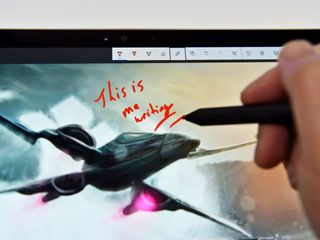
For this reason, and the increased levels of pressure sensitivity, the Bamboo Ink works better on current Surface devices. It's not an enormous difference, but that extra sensitivity goes a long way. However, you cannot customize the force-curve like you can with the Surface Pen due to the lack of proper software. It works well with Windows Ink though and supports all the features users expect.
Unfortunately, there is no magnet on Bamboo Ink, so you will not be able to stick it to the side of a Surface.
Whereas the Surface Pen has a very satisfying click for the top programmable button, the Bamboo Ink is a soft and bit mushy. Surface Pen requires more force to click – but it does click – whereas Bamboo Ink just depresses.
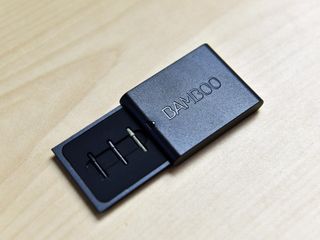
I also found a bigger advantage with Wacom AES devices such as the EliteBook x360 and Latitude 5285. There, the increased pressure levels and initiation force were much better than on the Surface Pro 4. In general, I find Wacom AES to be more accurate, with less latency, than the current-generation Surface Pro pen. That is the case here; the Bamboo Ink just flows, and it's a joy to use.
The one caveat is Surface Studio, which seems to have better pen support than Surface Pro 4 and Surface Book, likely due to a newer generation co-processor in the display. As a result, using Bamboo Ink feels fantastic on the Studio's ginormous screen.
I also prefer the triangular shape of the Bamboo Ink, which is more ergonomic than the Surface Pen. The pen itself is also matte black with a hint of soft-touch paint, and it feels great in hand.
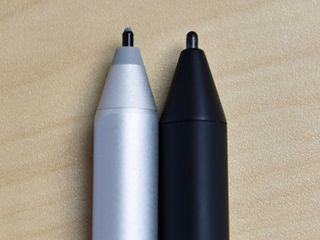
Weight is distributed evenly with the Bamboo Ink. It weighs 19 grams versus the 21 grams of the Surface Pen. Both pens take a single AAAA battery to power the Bluetooth component.
There are no differences in latency – the time it takes the ink to register on a display – because that is dependent on the screen and PC's hardware, not the oen.
What about Surface Pen and Surface Pro (2017)?
My experience tells me Bamboo Ink is slightly better for current Surface Pen users, but Microsoft is stepping it up with Surface Pro for 2017.
The new Surface Pen ($99) also supports 4,096 pressure levels and adds in tilt support for all current Surface devices. Additionally, it only requires 9g of activation force, which is an improvement over the last generation. Going further, the new Surface Pro (2017) has just 21 milliseconds of latency due to the new co-processor that connects the GPU to the display digitizer. That's down from 40 milliseconds to 45 milliseconds on the Surface Pro 4.
I don't have the new Surface Pen, expected this summer, to review or compare to Bamboo Ink, unfortunately.
Bambo Ink review conclusion: Who should buy it?
I have nothing bad to say about the Wacom Bamboo Ink. It's priced below the new Surface Pen ($69 versus $99), and it even comes with optional nibs (Microsoft charges $20 for a similar Pen Tip Kit.
Not only does Bamboo Ink feel great, but for Surface owners there is a slight improvement in overall sensitivity compared to the existing Surface Pen ($59). You lose the magnet, but you gain a slightly more ergonomic pen that also works better with splendid angles.
New Microsoft Surface Pen: Everything you need to know
Likewise for devices that already support AES – you can see the list of tested and compatible PCs – I think the Bamboo Ink is a smart purchase if you use the pen and Windows Ink often.
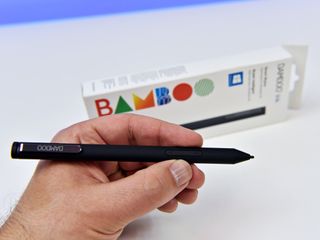
Bamboo Ink is just better, with varying degrees all around.
If, however, you are thinking about buying the new Surface Pen or are getting the new Surface Pro, you may want to hold off until the reviews come. It appears that the new Surface Pen coupled with Surface Pro may be the best combination yet.
Either way, it's great to see Wacom and its UPF finally launch in the consumer market. Surface and Wacom AES users now have more choices and can jump quickly between devices without thinking about the technology. And if you just prefer Wacom's pen design, you can now use it with your Surface.
Pros:
- Excellent triangular design and ergonomics.
- Works with Microsoft Surface devices.
- Slightly better than current Surface Pen.
- Unified framework works across devices.
- Pen tips are included.
Cons:
- Users may want to wait for new Surface Pen.
- No magnet to attach to devices.
- LED for switching modes is dim.
- No tilt support, with vague hardware specifications.

Daniel Rubino is the Editor-in-chief of Windows Central. He is also the head reviewer, podcast co-host, and analyst. He has been covering Microsoft since 2007, when this site was called WMExperts (and later Windows Phone Central). His interests include Windows, laptops, next-gen computing, and watches. He has been reviewing laptops since 2015 and is particularly fond of 2-in-1 convertibles, ARM processors, new form factors, and thin-and-light PCs. Before all this tech stuff, he worked on a Ph.D. in linguistics, watched people sleep (for medical purposes!), and ran the projectors at movie theaters because it was fun.